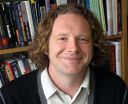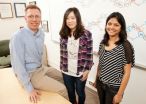(Press-News.org) EUGENE, Ore. -- Technology alone won't help the world turn away from fossil fuel-based energy sources, says University of Oregon sociologist Richard York. In a newly published paper, York argues for a shift in political and economic policies to embrace the concept that continued growth in energy consumption is not sustainable.
Many nations, including the United States, are actively pursuing technological advances to reduce the use of fossil fuels to potentially mitigate human contributions to climate-change. The approach of the International Panel on Climate Change assumes alternative energy sources -- nuclear, wind and hydro -- will equally displace fossil fuel consumption. This approach, York argues, ignores "the complexity of human behavior."
Based on a four-model study of electricity used in some 130 countries in the past 50 years, York found that it took more that 10 units of electricity produced from non-fossil sources -- nuclear, hydropower, geothermal, wind, biomass and solar -- to displace a single unit of fossil fuel-generated electricity.
"When you see growth in nuclear power, for example, it doesn't seem to affect the rate of growth of fossil fuel-generated power very much," said York, a professor in the sociology department and environmental studies program. He also presented two models on total energy use. "When we looked at total energy consumption, we found a little more displacement, but still, at best, it took four to five units of non-fossil fuel energy to displace one unit produced with fossil fuel."
For the paper -- published online March 18 by the journal Nature Climate Change -- York analyzed data from the World Bank's world development indicators gathered from around the world. To control for a variety of variables of economics, demographics and energy sources, data were sorted and fed into the six statistical models.
Admittedly, York said, energy-producing technologies based on solar, wind and waves are relatively new and may yet provide viable alternative sources as they are developed.
"I'm not saying that, in principle, we can't have displacement with these new technologies, but it is interesting that so far it has not happened," York said. "One reason the results seem surprising is that we, as societies, tend to see demand as an exogenous thing that generates supply, but supply also generates demand. Generating electricity creates the potential to use that energy, so creating new energy technologies often leads to yet more energy consumption."
Related to this issue, he said, was the development of high-efficiency automobile engines and energy-efficient homes. These improvements reduced energy consumption in some respects but also allowed for the production of larger vehicles and bigger homes. The net result was that total energy consumption often did not decrease dramatically with the rising efficiency of technologies.
"In terms of governmental policies, we need to be thinking about social context, not just the technology," York said. "We need to be asking what political and economic factors are conducive to seeing real displacement. Just developing non-fossil fuel sources doesn't in itself tend to reduce fossil fuel use a lot -- not enough. We need to be thinking about suppressing fossil fuel use rather than just coming up with alternatives alone."
The findings need to become part of the national discussion, says Kimberly Andrews Espy, vice president for research and innovation at the UO. "Research from the social sciences is often lost in the big picture of federal and state policymaking," she said. "If we are to truly solve the challenges our environment is facing in the future, we need to consider our own behaviors and attitudes."
INFORMATION:
About the University of Oregon
The University of Oregon is among 108 institutions chosen from 4,633 U.S. universities for top-tier designation of "Very High Research Activity" in the 2010 Carnegie Classification of Institutions of Higher Education. The UO also is one of two Pacific Northwest members of the Association of American Universities.
Source: Richard York, associate professor of sociology and environmental studies, 541-346-5064, rfyork@uoregon.edu
Links:
York faculty page: http://sociology.uoregon.edu/faculty/york.php
Department of Sociology: http://sociology.uoregon.edu/
Environmental Studies Program: http://envs.uoregon.edu/
UO Science on Facebook: http://www.facebook.com/UniversityOfOregonScience
Note: The University of Oregon is equipped with an on-campus television studio with satellite uplink capacity, and a radio studio with an ISDN phone line for broadcast-quality radio interviews. Call the Media Contact above to begin the process.
Focus on technology overlooks human behavior when addressing climate change
Study shows it takes 10 units of alternative electricity sources to offset a unit of fossil fuel-generated power
2012-03-20
ELSE PRESS RELEASES FROM THIS DATE:
Health must be central to climate change policies, say experts
2012-03-20
Health must be taken into account in climate change mitigation strategies. It is not widely appreciated that there are many benefits to health that are likely to accrue from a low carbon economy, say experts in a special supplement published on bmj.com today. They believe that health professionals "are uniquely placed to guide the climate change conversation towards better policies that are good for the planet and for people."
It follows a high level meeting, hosted by the BMJ in October 2011, where doctors and security experts warned that climate change poses an immediate ...
Ventana Research Releases Fast, Clean Close Benchmark Research and Education Services
2012-03-20
Ventana Research has released its newest benchmark research, "Trends in Developing the Fast, Clean Close: Refining Financial Processes and Systems for Best Execution."
Completing the accounting cycle quickly and accurately is essential for any finance organization. Not only is this a good indicator of efficiency, but also the speed in which books are closed has a number of ramifications. It can affect how rapidly a company is able to prepare data management reports, and the sooner managers have this information, the sooner they understand their situation. This ...
Polycrystalline diamond drill bits open up options for geothermal energy
2012-03-20
Nearly two-thirds of the oil we use comes from wells drilled using polycrystalline diamond compact (PDC) bits, originally developed nearly 30 years ago to lower the cost of geothermal drilling. Sandia and the U.S. Navy recently brought the technology fullcircle, showing how geothermal drillers might use the original PDC technology, incorporating decades of subsequent improvements by the oil and gas industry.
Sandia and the Navy's Geothermal Program Office (USN GPO) conducted the Phase One demonstration tests as part of a geothermal resources evaluation at the Chocolate ...
New antibiotic could make food safer and cows healthier
2012-03-20
CHAMPAIGN, Ill. — Food-borne diseases might soon have another warrior to contend with, thanks to a new molecule discovered by chemists at the University of Illinois. The new antibiotic, an analog of the widely used food preservative nisin, also has potential to be a boon to the dairy industry as a treatment for bovine mastitis.
The antibiotic nisin occurs naturally in milk, a product of bacteria resident in the cow's udder. It helps keep milk from spoiling and kills a broad spectrum of bacteria that cause food-borne illness, most notably listeria and clostridium. It was ...
New research about facial recognition turns common wisdom on its head
2012-03-20
A team of researchers that includes a USC scientist has methodically demonstrated that a face's features or constituents – more than the face per se – are the key to recognizing a person.
Their study, which goes against the common belief that brains process faces "holistically," appears this month in Psychological Science.
In addition to shedding light on the way the brain functions, these results may help scientists understand rare facial recognition disorders.
Humans are great at recognizing faces. There are even regions in the brain that are specifically associated ...
Population age and inpatient care
2012-03-20
The effect of population aging on the number of admissions to hospital for inpatient treatment is examined by epidemiologist Enno Nowossadeck in the latest issue of Deutsches Ärzteblatt International (Dtsch Arztebl Int 2012; 109[9]: 151-7.
Germany's population is steadily growing older, and the number of hospital admissions is increasing. By taking nationwide statistics on hospital treatment in the years 2000 and 2009 and classifying the patients by year of birth, sex, and diagnosis, the author investigates whether these two trends are connected.
His analysis reveals, ...
Cytori breast reconstruction cell therapy trial results published
2012-03-20
Zug, Switzerland and San Diego, CA – Cytori Therapeutics (NASDAQ: CYTX) announced today the publication of RESTORE-2 trial results in the peer-reviewed European Journal of Surgical Oncology.
RESTORE-2 is a 71 patient multi-center, prospective clinical trial using autologous adipose-derived regenerative cell (ADRC)-enriched fat grafting for reconstruction of the breast after cancer surgery. The majority of patients underwent radiation prior to the procedure, creating an unfavorable ischemic environment for which breast reconstruction with ADRC-enriched fat grafting appears ...
Cosmic rays alter chemistry of lunar ice
2012-03-20
DURHAM, N.H. –– Space scientists from the University of New Hampshire and multi-institutional colleagues report they have quantified levels of radiation on the moon's surface from galactic cosmic ray (GCR) bombardment that over time causes chemical changes in water ice and can create complex carbon chains similar to those that help form the foundations of biological structures. In addition, the radiation process causes the lunar soil, or regolith, to darken over time, which is important in understanding the geologic history of the moon.
The scientists present their findings ...
Geologic map of Jupiter's moon Io details an otherworldly volcanic surface
2012-03-20
More than 400 years after Galileo's discovery of Io, the innermost of Jupiter's largest moons, a team of scientists led by Arizona State University (ASU) has produced the first complete global geologic map of the Jovian satellite. The map, published by the U. S. Geological Survey, depicts the characteristics and relative ages of some of the most geologically unique and active volcanoes and lava flows ever documented in the Solar System.
Following its discovery by Galileo in January 1610, Io has been the focus of repeated telescopic and satellite scientific observation. ...
Omega Janitorial Service, With Offices in Houston, Corpus Christi, Dallas and Austin Launch Opening of Second Location in the Houston Area
2012-03-20
With 30 years of management under our belt, Omega Janitorial Service is proud to announce the opening of our second office in the Houston Area. In order to accommodate a growing demand, we have expanded into a brand new facility located off of Beltway 8 North by the International Airport. Our spacious new office and large warehouse offers Omega expanded abilities to receive and house bulk shipments. With increased abilities to house greater amounts of the best products possible, we are continuing to strive to achieve the greatest savings for our customers as our main focus ...
LAST 30 PRESS RELEASES:
The Ceramic Society of Japan’s Oxoate Ceramics Research Association launches new international book project
Heart-brain connection: international study reveals the role of the vagus nerve in keeping the heart young
Researchers identify Rb1 as a predictive biomarker for a new therapeutic strategy in some breast cancers
Survey reveals ethical gaps slowing AI adoption in pediatric surgery
Stimulant ADHD medications work differently than thought
AI overestimates how smart people are, according to HSE economists
HSE researchers create genome-wide map of quadruplexes
Scientists boost cell "powerhouses" to burn more calories
Automatic label checking: The missing step in making reliable medical AI
Low daily alcohol intake linked to 50% heightened mouth cancer risk in India
American Meteorological Society announces Rick Spinrad as 2026 President-Elect
Biomass-based carbon capture spotlighted in newly released global climate webinar recording
Illuminating invisible nano pollutants: advanced bioimaging tracks the full journey of emerging nanoscale contaminants in living systems
How does age affect recovery from spinal cord injury?
Novel AI tool offers prognosis for patients with head and neck cancer
Fathers’ microplastic exposure tied to their children’s metabolic problems
Research validates laboratory model for studying high-grade serous ovarian cancer
SIR 2026 delivers transformative breakthroughs in minimally invasive medicine to improve patient care
Stem Cell Reports most downloaded papers of 2025 highlight the breadth and impact of stem cell research
Oxford-led study estimates NHS spends around 3% of its primary and secondary care budget on the health impacts of heat and cold in England
A researcher’s long quest leads to a smart composite breakthrough
Urban wild bees act as “microbial sensors” of city health.
New study finds where you live affects recovery after a hip fracture
Forecasting the impact of fully automated vehicle adoption on US road traffic injuries
Alcohol-related hospitalizations from 2016 to 2022
Semaglutide and hospitalizations in patients with obesity and established cardiovascular disease
Researchers ‘listen in’ to embryo-mother interactions during implantation using a culture system replicating the womb lining
How changing your diet could help save the world
How to make AI truly scalable and reliable for real-time traffic assignment?
Beyond fragmented markets: A new framework for efficient and stable ride-pooling
[Press-News.org] Focus on technology overlooks human behavior when addressing climate changeStudy shows it takes 10 units of alternative electricity sources to offset a unit of fossil fuel-generated power




